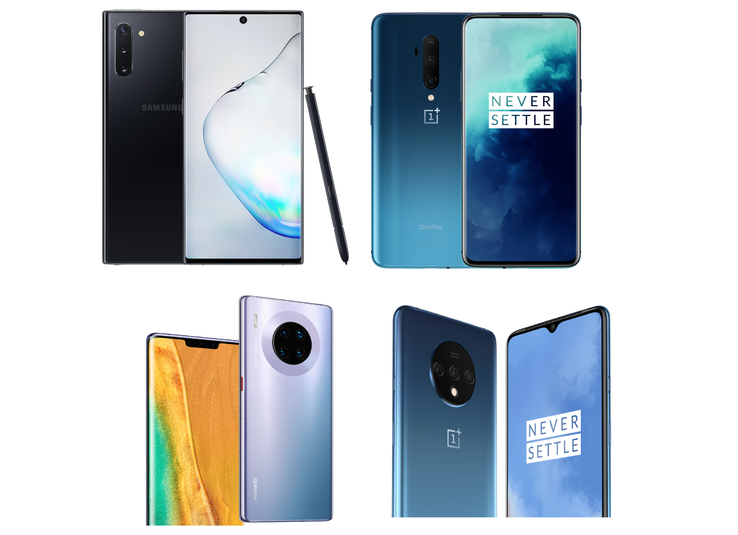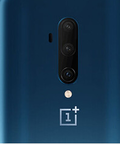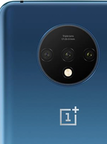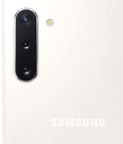OnePlus 7T smartphone camera comparison: The camera champion is, once again, not Huawei
We have already compared the cameras of the top-tier smartphones that came out in the first half of 2019, and we are taking a closer look at the photos that the Android devices that came out in the second half of the year take. Here, we are talking about the Huawei Mate 30 Pro and the Samsung Galaxy Note 10. We check out whether or not the OnePlus 7T Pro with its improved camera (software) has gotten dangerously close to what the top-end smartphones have to offer, and we also pay attention to the differences in image quality between the 7T Pro and the 7T, the differences which you can see for yourself by looking at the various shots we took under various conditions.
Each smartphone uses the latest available version of Android at the time of the camera comparison. We have put side-by-side photos from different devices to make comparisons easier. But first a few words about the specifications of the cameras.
The camera set-ups in comparison
Just like its predecessor, the OnePlus 7T Pro comes with a 48-MP main camera sensor from Sony that has an f/1.6 aperture. The quad Bayer filter in the IMX586 image sensor can merge four nearby pixels into one, which leads to an effective resolution of 12 MP. The so-called 4-in-1 pixel binning serves to reduce noise in dark environments. In addition to the main sensor, the triple camera setup also has a 16 MP ultra wide-angle sensor and an 8-MP telephoto lens with 3x optical zoom.
The OnePlus 7T without the “Pro” moniker also comes with the IMX586 image sensor from Sony as well as a 16-MP ultra wide-angle lens. There are differences when it comes to the optical zoom: the 7T’s telephoto lens only features 2x optical zoom, but it can shoot at 12 MP.
The camera module on the back of the Huawei Mate 30 Pro is comprised of 4 sensors, where the time-of-flight sensor does not take any pictures. The Mate 30 Pro comes with a 40-MP ultra wide-angle sensor and an 8-MP telephoto lens with 3x optical zoom. The main camera consists of a 40-MP sensor with an f/1.6 aperture.
Just like the Galaxy S10 series, the Galaxy Note 10 comes with a 12-MP image sensor, Dual Pixel autofocus and a variable aperture (f/1.5 and f/2.4). Like the rest of the competition, the Korean manufacturer completes the package with a 16-MP super wide-angle sensor as well as a 12-MP telephoto lens with 2x optical zoom.
| OnePlus 7T | OnePlus 7T Pro | Samsung Galaxy Note 10 | Huawei Mate 30 Pro | |
|---|---|---|---|---|
| Camera set-up back | 48 MPix f/1.6, contrast-detection autofocus, phase detection autofocus, OIS (camera 1); 16.0 MP, f/2.2, ultra wide-angle (camera 2); 12.0 MP, f/2.2, telephoto lens (camera 3) | 48 MP Sony IMX586, 1.6 μm, f/1.6, OIS (Kamera 1), 8 MP telephoto lens, 1 μm, OIS, f/2.4 (camera 2), 16 MP super wide-angle, f/2.2 (camera 3), triple-autofocus: PDAF, laser autofocus, contrast-detection autofocus | 12 MP f/1.5-f/2.4, phase detection autofocus (Dual Pixel), OIS, (camera 1); 12.0 MP, f/2.1, phase detection autofocus, OIS, Telephoto lens (camera 2); 16.0MP, f/2.2, wide-angle (camera 3) | 40 MP, f/1.6, OIS (camera 1); 40 MP ultra wide-angle f/1.8 (camera 2); 8 MP telephoto lens, f/2.4 (camera 3) |
| camera setup front | 16 MP f/2.0, fixed-focus lens | 16 MP Sony IMX471, 1 μm, f/2.0, fixed-focus lens, EIS, retractable | 10 MP f/2.2, phase detection autofocus (Dual Pixel) | 32 MP, f/2.0, fixed-focus lens |
| Software version | 10.0.4 | 10.0.4 | N970FXXU1ZSJM | 10.0.0.156 |
Photography with the rear cameras
We have tested all smartphones in this comparison with the Photo, Portrait and Night modes (these modes have different names on certain devices). All images we took were automatically enhanced by means of various image processing techniques. All camera settings were left in their default state.
Daylight photography
In our previous camera comparison of the top-tier smartphones, we observed a number of differences in color management and autofocus. The Samsung Galaxy Note 10 had the best dynamic range of all smartphones that we tested. The Korean manufacturer does very well in this discipline. The Note 10 also has a very good color reproduction, but the color temperature is somewhat warmer than the ideal. The Note 10 scores some major points in our close-up shots as well. Here, it offers the most detailed images.
We were not as thrilled with the pictures taken with Huawei’s smartphone in daylight conditions. The images shot with the Mate 30 Pro have a noticeable blue tinge to them. In the shot of the cow, the image looks too warm. However, the photos shot with the Mate 30 Pro are very sharp even in poorly lit environments as can be seen from the photo of the books.
Both OnePlus smartphones offer the best color accuracy. Here, there are no noteworthy differences between the OnePlus 7T and the 7T Pro. The 7T Pro is ahead in some shots, while the "normal“ 7T does better in others. That being said, the images captured with both smartphones are not very sharp at the edges.
A considerable amount of detail is lost in wide-angle shots on all smartphones. There is a bearable amount of distortion at the edges of the photos. The OnePlus 7T Pro shines with a very good color reproduction. However, the images captured with the 7T Pro look less detailed than the photos taken with the Mate 30 Pro and the Note 10. The dynamic range is also not great. Here, the Pro model comes out ahead of the Oneplus 7T. In addition, the photos shot with the smartphone from BBK Electronics seem too cool and somewhat over-sharpened.
The Mate 30 Pro outstrips the competition when it comes to low-light photography. The pictures taken with the Mate 30 Pro look the sharpest, but they are not over-sharpened. However, the Mate 30 Pro is beaten by the Note 10 when it comes to color reproduction and brightness.
When taking low-light shots with the telephoto lens, a class distinction arises. While the Huawei Mate 30 Pro and the Galaxy Note 10 produce images with the truest-to-life colors, the photos of the OnePlus smartphones have a visible yellow cast. The sharpness is also much worse when compared to the main camera. In the pictures shot with the 7T, the sharpness starts to progressively drop off as you move away from the center of the image. This effect is less pronounced on the 7T Pro.
In our opinion, the Mate 30 Pro takes the best pictures here. The images look comparatively sharp, the colors appear very natural and a lot of detail is preserved. The photos of the Galaxy Note 10 look over-sharpened, but they are better exposed.
Low-light and nighttime photography
When it comes to low-light photography, we can draw a clear class distinction amongst the main cameras. Neither of the two OnePlus devices with the Sony IMX586 image sensor produces well-lit and sharp images. The street photos taken with the 7T appear very noisy even under relatively good lighting.
When it comes to nighttime photography, the Mate 30 Pro, just like the other devices from the P series, delivers very good images. In dimly lit environments, photos captured with the Mate 30 Pro look less noisy than what the competition has to offer. The level of detail is also remarkable. However, the color temperature is not very accurate.
The pictures taken with the Galaxy Note 10 at night appear more blurry and flatter when compared to the Mate 30 Pro. However, the night shots captured with the Note 10 are better lit and have more natural colors. The shots taken in the darkness (see photo 2) look very noisy. When using the night mode, which is supposed to improve nighttime performance by increasing exposure times and using computational photography techniques, the Note 10 is beaten by the Huawei Mate 30 Pro. In any case, the competition is able to squeeze more out of the night mode.
There are noticeable differences between the OnePlus 7T and the 7T Pro, when it comes to the ultra wide-angle and telephoto lenses. Here, the 7T takes the worst photos by far. The images turn out to be very blurry.
The 7T Pro does not come close to the nighttime performance of the Mate 30 Pro. The ultra wide-angle lens of the Huawei smartphone produces images with the least amount of noise. Because it captures a lot of light, the shots look very detailed. The ultra wide-angle lens of the Galaxy Note 10 also produces well-lit photos, which are even more color accurate than those of the Huawei flagship. However, the Note 10 photos are noticeably noisier.
Selfie cameras
Here the Note 10 offers the best camera specifications. Its front-facing camera features Dual Pixel autofocus. This is why it is not surprising that the Galaxy Note 10 takes the best selfies in broad daylight.
When it comes to sharpness, dynamic range and contrast, the Note 10 is king. However, in terms of color reproduction, both OnePlus smartphones do a better job. The selfie camera of the 7T Pro in particular delivers a very comparable level of performance to the Note 10. The differences in image quality are more pronounced when compared to the Mate 30 Pro. The selfies taken with the Huawei smartphone appear overblown and washed-out. The level of detail is poor and the colors, as is the case with the Note 10, are too warm.
The Mate 30 Pro fails to impress in dimly lit environments as well. The noise is so bad that individual beard hairs and other fine details become unrecognizable. The photos taken with the Note 10 are too soft, which is why the pop-up camera of the OnePlus 7T Pro takes the crown in this discipline.
Verdict - It is hard to pick a clear winner…
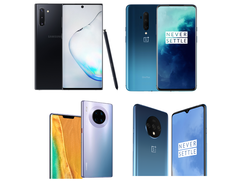
In good lighting conditions, the main cameras of all four smartphones take very good pictures – there is no clear leader. However, in our opinion, the Galaxy Note 10 takes photos with the highest dynamic range, but it falls short when it comes to color science, because the Note 10’s photos often appear too warm. The Huawei Mate 30 Pro also has issues with color accuracy. In poorly lit environments, such as on cloudy days, the main camera of the Huawei smartphone tends to make pictures too dim, which has a negative effect on the dynamic range. There are not many differences between the 7T and the 7T Pro.
When it comes to nighttime photography, the Huawei smartphone crushes the competition. Here, it produces well-lit images with relatively little noise and a lot of detail. The smartphones from OnePlus fare the worst here. The Galaxy Note 10 slides in between the Mate 30 Pro and the OnePlus smartphones. However, in terms of image quality, it is closer to the OnePlus devices than to the Mate 30 Pro.
The ultra wide-angle and telephoto lenses of the Mate 30 Pro and the Note 10 are roughly on the same level. At night, the Mate 30 Pro takes better photos, but the color reproduction is still its weakest spot. When shooting photos with both lenses on the 7T and the 7T Pro, differences between the two devices become more apparent. Both devices are doing especially poorly in low-light conditions.
When it comes to selfies, the clear winners are the Galaxy Note 10 and the OnePlus 7T Pro.


